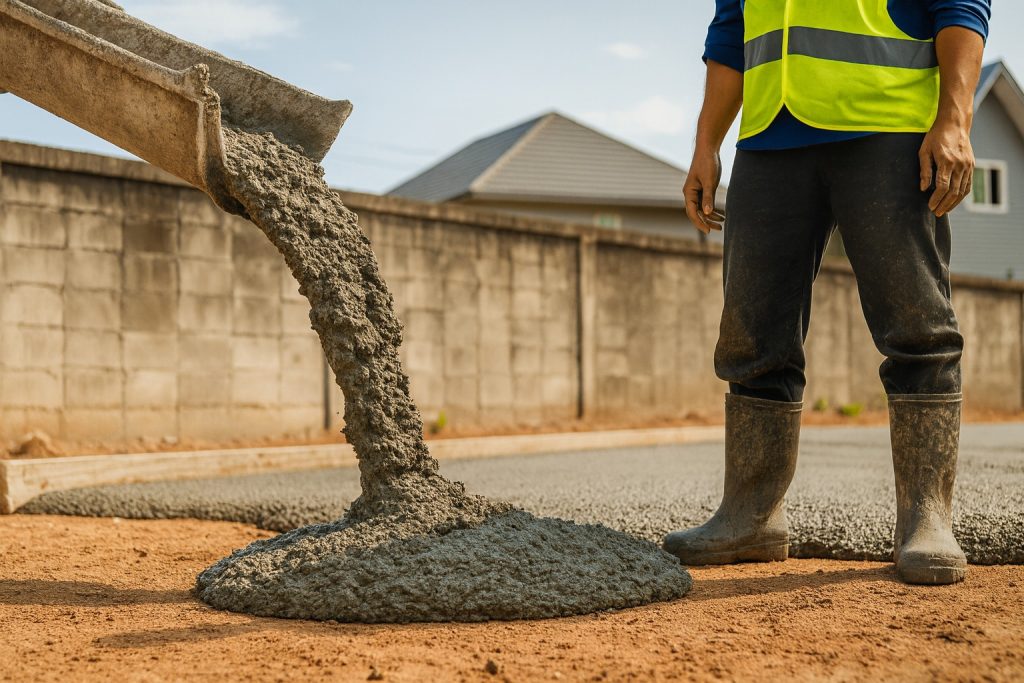
Imagine moving into a new home. The walls are freshly painted, the lights shine brightly, and the floor beneath your feet feels solid. That solid surface, the concrete floor, is not just something you walk on; it’s the foundation that holds your entire world together. Now think about the road you drove on to reach that house. Or the office building you pass every day. Or the dam that powers electricity in your city. Behind each of these lies the same unsung hero.
Concrete is everywhere. It’s in the concrete blocks that form walls, the beams that hold up bridges, and even in decorative patios covered with concrete floor paint. Yet most people never stop to ask: What exactly is concrete? Why is it so important? And how can the right mix or finish change the strength, cost, and safety of a building?
The truth is, not all concrete is the same. There are different types of concrete, each designed for a specific purpose. Some types focus on strength, some on beauty with unique concrete textures, and others on flexibility for repairs. Even choosing the best concrete sealer or applying the right concrete crack repair method can determine whether a structure lasts decades or starts showing cracks within a few years.
This guide takes you deeper into the world of concrete. We’ll talk about what it’s made of, explore the types of concrete finishes you can choose from, explain key concrete properties, and look at the real cost of concrete for different projects. Whether you’re a homeowner, a business owner, or just curious about construction, this will help you see why concrete is more than just a grey surface; it’s the foundation of modern life.
Concrete might look simple, but it’s a clever mix of ingredients. At its core, it’s made of four things:
Together, these ingredients create what we call concrete material properties. The balance matters. Too much water? The concrete becomes weak. Poor aggregates? The concrete cracks early. That’s why skilled concrete contractors carefully measure ratios for every project.
For example:
The mix isn’t one size fits all. It’s tailored to the purpose.
There are different types of concrete, each suited for specific jobs:
Each type is selected based on purpose, safety, and budget. A family building a home might choose reinforced and lightweight concrete. A commercial developer may prefer high-strength mixes and polished concrete floor paint for presentation.
Concrete doesn’t have to be boring. In fact, the finish can change the way a space feels. Here are some popular types of concrete finishes:
Each finish brings both function and personality. A homeowner might choose polished concrete for a modern living room, while a builder may go for broom finishes in outdoor walkways.
Why does concrete matter so much? Because of its unique properties of concrete that no other material matches:
These concrete properties are why engineers prefer it for everything from simple concrete blocks to massive bridges. By tweaking the mix, concrete contractors can create a product that’s perfect for the job.
The cost of concrete varies depending on project size, type, and finish.
For example:
It’s a balance: cheap mixes save money upfront but may require frequent concrete repair later. Paying for quality saves money long term.
Concrete is strong, but it still needs care. Over time, cracks can appear due to stress, weather, or poor quality. That’s where concrete repair comes in.
For example, a cracked driveway might only need filler, while a damaged commercial concrete floor may need contractors to resurface the entire slab. Regular care keeps structures safe and attractive.
Concrete is everywhere around us:
It’s not just about strength—it’s about making spaces livable, safe, and beautiful.
Concrete is more than just a building material; it’s a foundation for trust. From a family home to a massive bridge, the right mix of cement, aggregates, finishes, and care creates structures that last for generations. Whether you’re choosing between different types of concrete, planning a polished concrete floor, looking for the best concrete sealer, or hiring concrete contractors for a big project, the decisions you make today will shape the future of your building.
Use a low water-cement ratio, add fibers, and choose reinforced or high-strength mixes.
It provides a safe foundation, long-term durability, and fire resistance.
Plain concrete for slabs, reinforced for beams, and lightweight concrete blocks for walls.
Yes. Weak concrete leads to cracks, repairs, and reduced property value.
Quality concrete prevents collapse, resists weather, and ensures long-term stability.